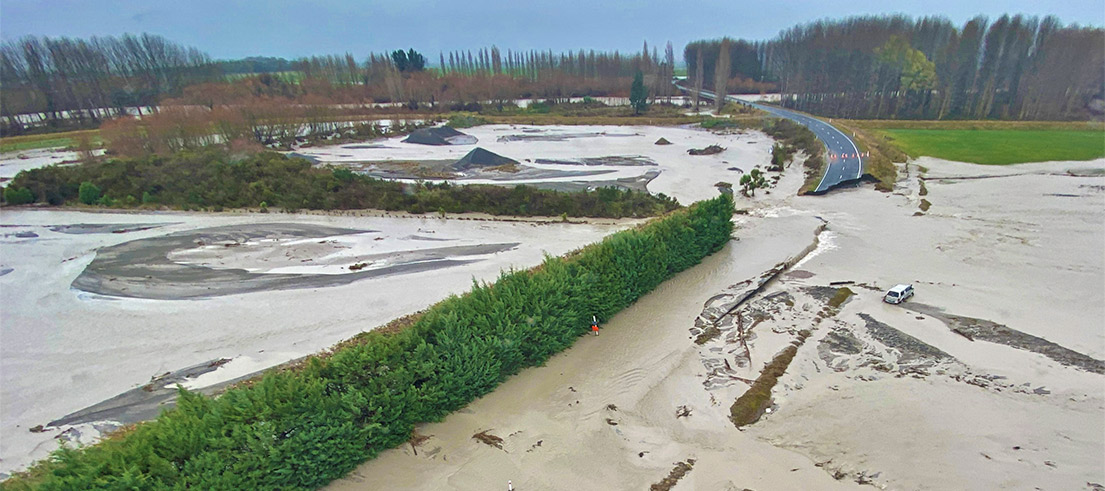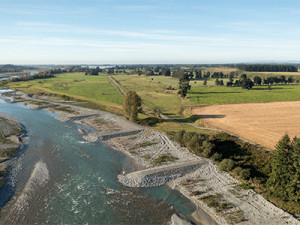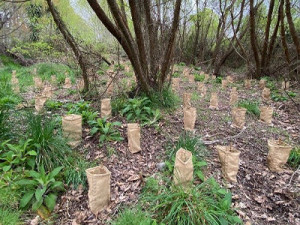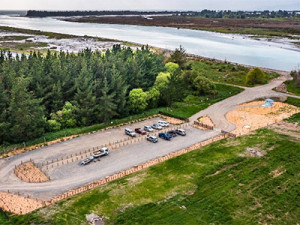
Urgent call for $150 million to protect New Zealanders from floods
We are leading the release of a report from Te Uru Kahika - Regional and Unitary Councils Aotearoa with a clear and urgent message: New Zealanders cannot afford to bear the future burden of increasingly severe and frequent floods that pose a real danger to lives and livelihoods.
The report calls for national leadership and urgent action to meet climate change-induced flood hazard risks.
“We are pleased to be leading the release of this important national report. Here in Canterbury, we know only too well the effects of flooding. Floods displace people from their homes, stop them from reaching work, schools, medical care and families, and do untold damage to community wellbeing,” said Canterbury Regional Council Chair Jenny Hughey, following the release of the report at the Natural Environment Committee meeting.

Flood repair works on the Rangitata River completed following damage caused by significant rainfall in December 2019.
Flooding affects everyone
Flood schemes protect not just those living and working near the rivers, but everyone whose access to supplies, power, medical care, schools, workplaces, and family is impacted when roading and other critical infrastructure is damaged.
The May/June 2021 Canterbury flooding caused about $20 million of flood damage, with $12 million to be borne by ratepayers and recovery work expected to take up to 2 years to complete.
“Thankfully, there was no loss of life. The town of Ashburton was saved from greater damage by a well-designed urban flood protection scheme, but many rural landowners were severely affected,” said Hughey.
Infrastructure repairs are a long-term undertaking, often taking years to complete and need to be managed in addition to ongoing infrastructure maintenance.
“We’ve just recently completed a series of ‘Make it Safe’ repair works on the Rangitata River and are still remediating 12 critically damaged sites on the lower Waitaki River, all caused by significant flooding from back in 2019,” she said.
New funding model needed
The Te Uru Kahika report clearly documents the scale of Crown assets and values protected by flood protection schemes, advocating that the efficient functioning of the economy and our communities is a responsibility that must be shared between regional councils and Central Government.
Devastating flood events across the country have highlighted the need to revisit funding models, many of which have been in place for decades and are no longer sustainable for local communities or fit-for-purpose in the face of climate change.
The estimated cost of improving the quality of protection provided by the schemes is significant.
Currently, regional and unitary councils invest about $200 million each year in flood protection schemes. This is estimated to fall short of what’s needed by $150 million per annum. Over the ten years considered, that would be $1.5 billion of under-investment in critical flood protection schemes.
What is increasingly clear following the recent spate of nationwide floods is that a shared investment today means better protection for current and future generations, lower overall recovery costs and importantly, mitigation now may actually save lives.
Fit for future flood management
Contemporary flood protection is complex requiring consideration for the health and wellbeing of our rivers as a whole.
This means giving a stronger focus to ecosystems to support native biodiversity and water quality, managing weed infestations that threaten habitats and nurturing the connection between people and rivers through recreational opportunities alongside flood infrastructure.
Future flood management solutions need to consider important community, environmental, cultural, economic, whole-of-catchment and Te Mana o te Wai issues, together with spatial planning, managed retreat, building control and community preparedness responses.
Hughey said that regional councils have demonstrated their expertise and capability to deliver such fit-for-the-future flood protection solutions.
“Our climate resilience programme of flood protection projects undertaken with Covid-19 relief funding from Kānoa* (JPG file, 102 KB) is clear evidence of how taking an integrated approach to river management can deliver multiple benefits in addition to meeting contemporary community flood risk and resilience expectations.
“Regional councils, working alongside Māori/iwi partners, are ready and willing to lead the delivery of a holistic river management strategy to provide both environmental and flood management benefits.
“We appreciate the one-off funding support received to date from Central Government to help us tackle the challenges that climate change presents.
However, this is about ensuring a sustainable, longer-term response to climate change impacts, and we can’t rely solely on Canterbury ratepayers to fund the necessary solutions,” Hughey said.

Native planting on the Upper Waimakariri River supports biodiversity objectives as well as flood protection.

5000 native plants have been planted at McIntoshs bend. The car park has been upgraded and a new toilet block installed.
Te Uru Kahika report
Report copies
Download the report (PDF file, 2.51MB).
About Te Uru Kahika - Regional and Unitary Councils Aoteaora
New Zealand has 16 regional and unitary councils. Te Uru Kahika is the newly established identity for the regional sector’s collective efforts. These 16 councils are charged with the integrated management of land, air, and water resources, supporting biodiversity and biosecurity, providing for regional transport services, and building more resilient communities in the face of climate change and natural hazards. Environmental science and local knowledge underpins all that they do.
The regional sector is powered by scientists, engineers, technicians, kaihautū, planners, project managers, land managers, technology specialists, and community relations officers working on some of the most pressing issues of our time. They have extensive knowledge of the catchments and communities they work in, as well as a strong connection to Te Ao Māori, reflected in the decisions that are made.
Regional sector coordination and input into national direction setting is crucial. As a collective, Te Uru Kahika works together to apply its expertise and local knowledge for the wellbeing of our environments and communities.
